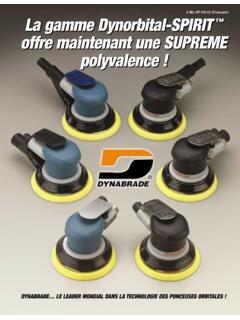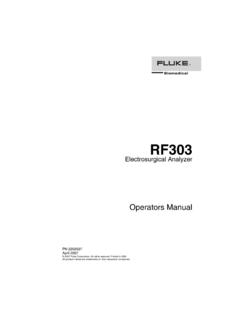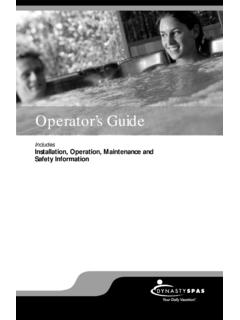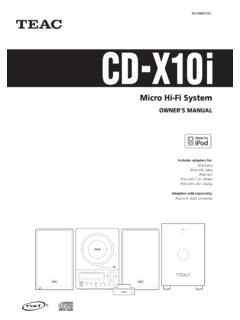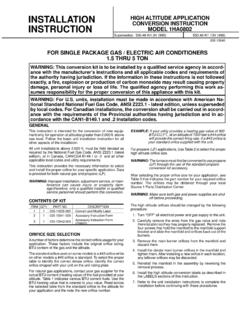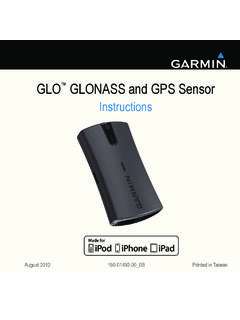Transcription of Mini-Dynafile Parts Page Reorder No. PD13†10 - …
1 mini -DynafileAbrasive Belt ToolSafety, Operation and Maintenance Save This Document and Educate All PersonnelParts Page Reorder No. PD13 10 Effective April, 2013 WARNINGRead and understand this tool manual before operating your air tool. Follow all safety rules for the protection of operating personnel as wellas adjacent areas. Always operate, inspect and maintain this tool in accordance with the American National Standards Institute (ANSI).Safety Requirements for the Use, Care and Protection of Abrasive Wheels ANSI , Compressed Air and Gas Institute (CAGI) Safety Codefor Portable Air Tools , Code of Federal Regulation CFR 29 part 1910, International Organization for Standardization (ISO)
2 HandHeld Non-Electric Power Tools ISO 11148, Safety Requirements and applicable State and Local The Most Current Offering of Support Documents and Accessories at and understand tool manual before work startsto reduce risk of injury to operator, visitors, and protection to be worn when exposure to sound, exceeds the limits of applicable Federal, State or local statues, ordinances and/or safety requirements. Work alert, have properattire, and do not operate tools under the influence of alcohol or line hazard, pressurized supply lines and flexible hoses can cause serious injury.
3 Do not use damaged,frayed or deteriorated air hoses and protection must be worn at all times, eyeprotection to conform to ANSI protection to be used when exposed to contaminants that exceed the applicable threshold limit values required by dust created by sanding, grinding, drilling, and other construction activities contain chemicals known to cause cancer, birth defectsor other reproductive harm. Some examples of these chemicals are: Lead from lead-based paints Crystalline silica from bricks and cement and other masonry products Arsenic and chromium from chemically treated lumberYour risk from these exposures varies, depending on how often you do this type of work.
4 To reduce your exposure to these chemicals: work in a wellventilated area, and work with approved safety equipment, such as those dust masks that are specially designed to filter out microscopic NOT USE Tool for Anything Other Than Its Intended :Proper care, maintenance, and storage of your air tool will maximize tools performance and reduce chance for 's Responsibility:Provide operators with safety instructions and training for safe use of tools and to Your Supervisor any Condition of the Tool, Accessories or Operation you Consider Intent: Mini-Dynafile IIare used for grinding, deburring, blending and polishing on various materials.
5 Tool acceptsoptional abrasive belts that are 1/8" 1/2" wide and up to 13" and OPERATING INSTRUCTIONSC arefully Read and Understand the Generaland Sander sections found in Tool Safetyand Operating Guidelines (PN00001676) Before Handling or Using Read all instructions before operating or servicing anyDynabrade Abrasive Power Tool. Products offered by Dynabradeare not to be modified, converted or otherwise altered from theoriginal Size1500325,0001/2" W x 12" L1501325,0001/2" W x 13" L15006 Versatility Kit25,0001/4" 1/2" W x 12" LSANDERII Model 15003 For Serial No.
6 13D3028A and Higher MAINTENANCE INSTRUCTIONSI mportant:To keep tool safe, a Preventative Maintenance Program isrecommended. The program should include inspection of the tool and allrelated accessories and consumables, including air lines, pressure regulators,filters, oilers, etc. (refer to CAGI for additional maintenanceinformation). If accessory or tool breakage occurs, investigate failure todetermine the cause and correct before issuing tool for work. Use the followingschedule as a starting point in developing a Preventative MaintenanceProgram.
7 If tool does not operate properly (RPM, vibration, start/stop) afterthese scheduled checks or at any time, the tool must be repaired andcorrected before returning tool to To ensure long life and dependable service, use a Closed Loop Air Systemand Filter-Regulator-Lubricator (FRL) as diagramed below. Each tool should have its own dedicated hose connected to an air supplyFRL. Quick disconnects should be installed at the FRL in an effort to reducecontamination into the tool. Securely affix all fittings and hose assemblies. It is strongly recommended that all Dynabrade rotary vane air tools be usedwith a Filter-Regulator-Lubricator to minimize the possibility of misuse dueto unclean air, wet air or insufficient lubrication.
8 Dynabrade recommends thefollowing: 10681 Air Line Filter-Regulator-Lubricator Provides accurateair pressure regulation, two-stage filtration of water contaminants andmicro-mist lubrication of pneumatic components. Dynabrade recommends 1 drop of air lube per minute for each 20 SCFM(example: if the tool specification states 40 SCFM, set the drip rate on the filter-lubricator to 2 drops per minute). 95842 Dynabrade Air Lube is SCHEDULE Maintenance schedules depend on the type and style of tool. Refer to page 3 to reference symbols associated with specific maintenance maintenance schedules accordingly.
9 See page 4 for any additionalmaintenance information. Note:Turbine style air motors do not require oil. Daily (every 8 hours): Inspect tool and accessories for damage or broken Parts . Replace items as necessary to ensure proper operation and motor as recommended. Use 95842 Dynabrade Air Lube(10W/NR). Apply 1 drop/minute of air lube per 20 SCFM. Check air line pressure with a gage. (MAX. 90 PSIG or Bar operatingpressure at the air inlet of the tool.)Lubricate wick system and right angle gears through gear casefitting. Apply 3 plunges of 95848 Gear Oil.
10 Use 95541 Lubricant Gun(Prime lubricant gun before use). Check tool for proper operation: If operating improperly or demonstratesunusual vibration, the tool must be serviced and problem corrected beforefurther 20 Hours/Once a Week (which ever comes first): Measure RPM (speed) by setting air pressure to 90 PSIG ( Bar) at toolinlet, without accessory mounted, while the tool is running. Usingtachometer, check spindle speed of the tool. Unless otherwise stated theno-load speed may not exceed the rated speed. If tool speed exceedsmaximum rated RPM, service as required and correct before use.



